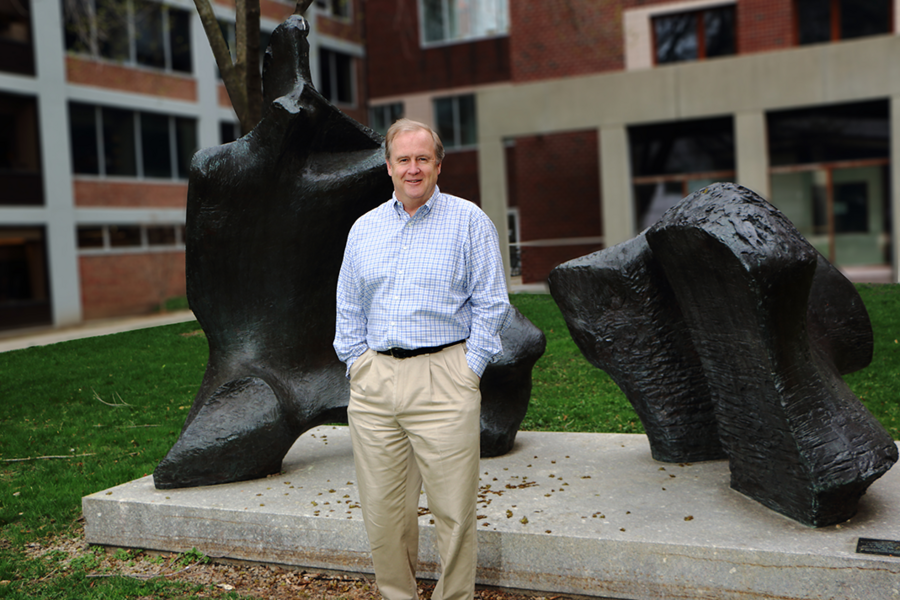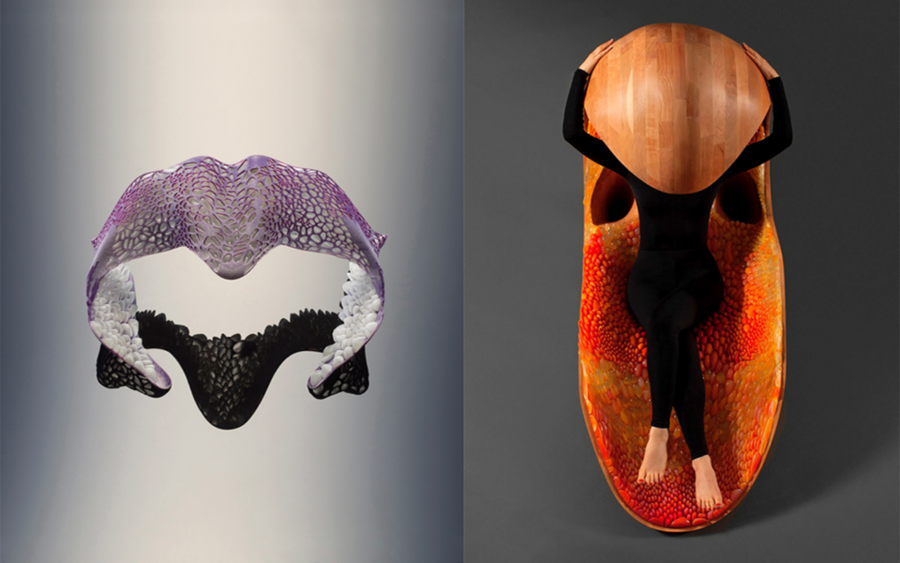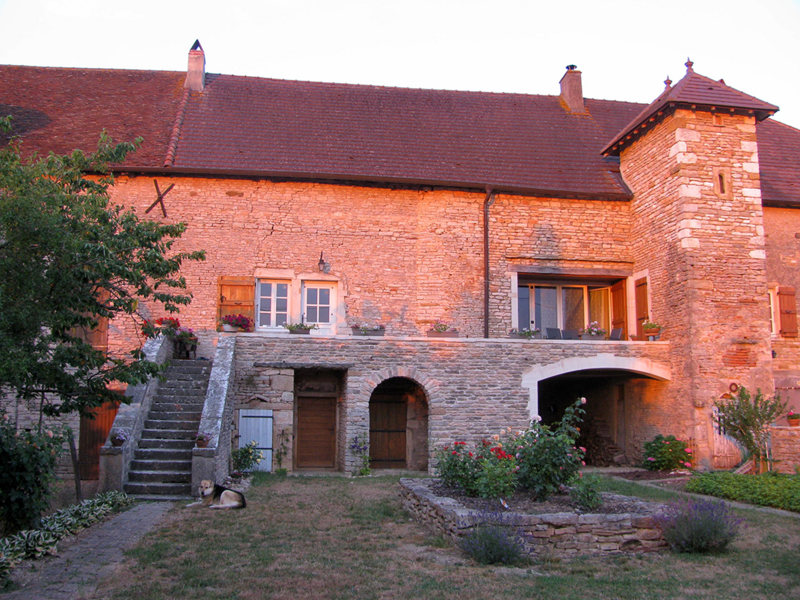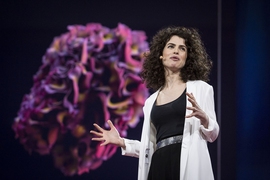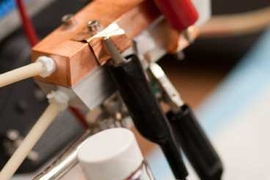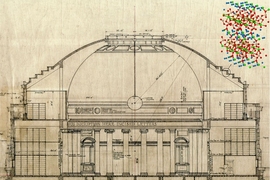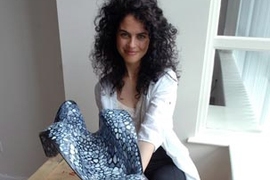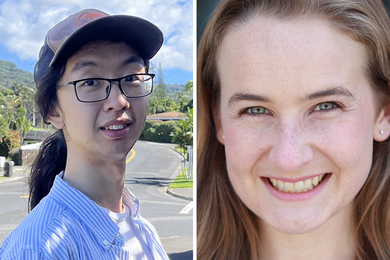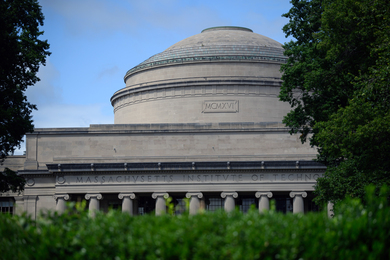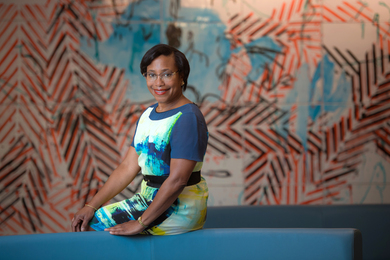Whether he's tackling thermodynamics and kinetics of batteries, modeling solid-state dewetting, or undertaking an artistic collaboration, MIT Professor W. Craig Carter brings a mathematical approach to solving problems and creating new work, developing fresh algorithms for each venture. He also is developing new paradigms for online materials science education, melding factual instruction with critical thinking and programming skills.
"I've gone from topic to topic pretty rapidly, and it kind of stems from an applied mathematical bent that I've always had in my career," says Carter, 54, the POSCO Professor of Materials Science and Engineering. "That gives you the ability to jump into a topic, find what problems are useful to be solved, and either do kind of a theoretical development or do simulations which shed insight onto materials phenomena."
On the scientific side, Carter collaborates closely with fellow Department of Materials Science and Engineering (DMSE) Professor Yet-Ming Chiang, whose experimental prowess complements Carter's computational skills, while on the artistic side, Carter partners frequently with associate professor of media arts and sciences Neri Oxman in creating nature-inspired sculptural objects.
Carter's recent projects include:
• developing the Materials Science Curriculum 2.0, using Wolfram Mathematica notebooks and the Wolfram Language as an integral part of proctored tutorials that engage students and build skills interactively;
• analyzing decision-making to integrate intermittent green-power sources such as wind and solar into the always-on power grid;
• understanding battery fatigue, assisted by postdoc Giovanna Bucci's work simulating the failure mechanisms in battery microstructures and solid-oxide fuel cells;
• modeling dewetting phenomena in thin films, supervising PhD student Rachel V. Zucker's creation of Wulffmaker and other software solutions; and
• a personal project to restore a 14th-century structure in the Burgundy region of France.
Retooling education
Distance education can cover a range of needs, from the MIT student continuing classes toward a degree while out of the country to the online learner in a massive open online course (MOOC) seeking enrichment. "MOOCs are very good for some things, but I don't think they're very good for higher education or developing critical thinking skills," Carter says. In contrast to MOOCs, Carter takes a different approach for materials science by building courses around a "master class" model of students interacting with an instructor. That means enrollments are necessarily smaller and instructor time has to be dedicated to proctoring the online class. His proctored scaffolding framework for online coursework uses modules that incorporate Wolfram Mathematica programming.
Carter has developed online tutorials for several material science courses, and this spring semester offered his 3.017 (Modeling, Problem Solving, Computing, and Visualization) course exclusively online to students at MIT.
Using a WebEx interface, Carter says, builds student skills in video conferencing, while the Mathematica component builds programming skills. Both are necessary professional skills for today's engineering students, he says. "This class combines programming, mathematics, visualization, and prototype problems in materials science, and puts them all together and gives the students very challenging problems to solve. I think that solving these problems is a very effective way not only to learn the subject but to develop skills which will transfer to into many different aspects of their professional lives," Carter says.
"My goal is to develop a very holistic curriculum for materials science and do a job that is the best I could possibly do," he says. "In developing the methods for materials science, hopefully it'll create a prototype for other STEM disciplines to follow."
Carter previously received a Wolfram Innovator Award for his use of Mathematica in the classroom. "What he's trying to do is really create a platform for learning that engages the students, makes them think in that distance learning environment," says Wolfram business development associate Adriana O'Brien. "We're always delighted to see him, especially at our technology conferences. He always brings something new to the table for other higher education users and professors that are creating digital content with Mathematica."
Carter has been assisted by Rachel Zucker, who earned her PhD this spring, and recently recruited Kyle Keane, a former Wolfram employee, to work on the MSC 2.0 project.
Power grid management
With Yet-Ming Chiang and Throop Wilder, Carter co-founded 24M, a company with a mission of making low-cost, high-energy-density batteries for power grid and transportation markets. While 24M's flow battery technology is based on innovations in semi-solid electrodes, Carter has also has been developing economic models about how grid operators should make efficient decisions.
"Most governments right now have a system where if a solar plant or a wind plant puts power onto the grid, the utility, or the grid operator, has to consume it. It creates havoc for the grid," Carter explains. The drive toward renewable sources has paradoxically increased greenhouse emissions from gas generators because cycling on and off frequently raises their carbon footprint, Carter says.
Because of these issues, adding battery backup to the grid isn't a plug-and-play operation. Operators need help in choosing the right-size batteries for their needs and guidelines for operating them. Once he recognized the problem, Carter says, he started constructing models for how to purchase and operate a battery. "It's not really materials science, but it is an application of algorithms and modeling, which is my craft," he explains.
While 24M has developed some proprietary battery management code, a number of academic problems remain that Carter is addressing through the MIT-Skoltech Center for Electrochemical Energy Storage (CEES). "What are the best algorithms in order to optimize battery usage? What could we say about either mathematics or can we improve the algorithms in order to make a much more efficient controller? Those are things that 24M is not interested in, and so it became a project that is part of this Skoltech initiative to do some academic work on that," Carter says. "At MIT, what we're trying to do is develop optimization techniques and then create software based on the mathematics of optimization," Carter adds. Lutao Xie, a graduate student in the interdisciplinary Center for Computational Engineering, is currently working on those optimization techniques for optimal dispatch.
Faculty partnership
Professors Carter, who specializes in modeling, and Chiang, who specializes in experimental work, hold joint research group meetings. "The students will have some part modeling, some part work in the laboratory. We have these joint meetings, where modeling and experiments and data are all discussed on the same footing," Carter explains. "The modeling may include doing data analysis for experiments that are being done or trying to construct models that help us understand that data and what's happening in the experiment."
A current research thrust is understanding the effect of replacing the liquid electrolyte in traditional batteries with solid electrolytes for all solid-states batteries. "There is going to be a mechanical problem associated with how the active electrode particles are mechanically coupled to the electrolyte. One anticipates that the failure modes are going to be delamination of the active battery materials, which convey the ions from the anode to the cathode and vice versa," Carter says. "We're anticipating that we're going to need to quickly do models that are based on coupled physics, electrostatics, mechanics, and chemistry, put these all together, and begin to model how these batteries behave. The difficulty right now is the experimental groups are just developing methods to get the mechanical properties out, so the models right now are moving ahead. We want to have the infrastructure in place that as soon as we have the mechanical properties, we'll be able to plug that directly into the model and start doing comparisons. In the meantime, we'll develop a lot of intuition for how the batteries behave given a set of parameters that describe the mechanical properties."
"The models will help give us a foundation on which we understand the experiments," Carter predicts. "The experimental results, as they develop, will help direct how we should push the model to look at different kinds of effects. Eventually, there is a convergence where data is coming up ready to plug into a model, and then, I think, we have this nice, complete understanding of how these batteries behave, thus perhaps have some design principles."
Lithium battery stresses
MIT postdoctoral associate Giovanna Bucci is working on understanding battery fatigue by simulating failure mechanisms in solid-state lithium battery microstructures and solid-oxide fuel cells. Bucci's expertise in continuum scale simulation enables her to model mechanical and chemical behavior of battery charging and discharging. Her work shows that mechanical stress is an important problem that cannot be ignored, Bucci says. With a strong background in solid mechanics, Bucci developed non-linear continuum mechanics-based simulations, using finite element analysis and writing computer code, primarily in C++, to model these interactions.
Bucci's background in rational mechanics, a very theoretical and very mathematical branch of mechanical engineering, makes her highly skilled in understanding non-linear mechanics, Carter says. "She's learning materials science very rapidly; I'm very impressed how rapidly she's learning this. So she is becoming this new synthetic scientist, who comes from a very strong mathematical, theoretical background, is picking up materials science, and she's loving the fact that she's working on these problems, which we know really matter."
Dewetting models
Rachel Zucker, who receives her PhD on June 5, has developed a range of mathematical solutions to explain various dewetting phenomena in thin films. Working under co-advisors Carter and Carl V. Thompson, Zucker published a paper on two-dimensional edge retraction for highly anisotropic, fully-faceted thin films. She also created open-source code, Wulffmaker, to calculate equilibrium shapes of faceted particles attached to deformable surfaces as well as particles attached to rigid surfaces. "Rachel is another good example of working with experimentalists, and doing theory at the same time, because she was co-advised by Carl and me," Carter says.
Modeling the anistropic surface tension that underlies dewetting phenomena such as edge retraction in thin films is a mathematically hard problem, Carter says. "What she's done is figure out how to formulate many of these problems, solved many sub-problems associated with retraction of a solid-state film, and then is beginning to synthesize and put it all together so that we have enough understanding and enough results that we can compare it to the experimental results that Carl Thompson is getting in his group."
"There is a lot of work now on creating structures on a substrate that are patterned that you can use to do two things. One is you either use the pattern itself to do something interesting, or you can use the pattern to grow something, like a forest of nanowires," Carter says. Zucker's contributions could help provide better control for patterning wires, transistors and other components in thin films ranging from about 100 micrometers (microns) down to about 10 micrometers (equivalent to about 4 thousandths of an inch to 4 ten-thousandths of an inch).
Innovative art works
Carter collaborated with Neri Oxman on a series of projects that integrate her artistic visions with Carter's algorithms, 3-D printing, and most recently computerized numerical control (CNC) machining. "The first one was in MoMA and I think that must have been six or seven years ago," Carter recalls. Their most recent project, the "Gemini" chair, blended advanced manufacturing with mathematics, algorithms, and art. It was shown in Paris as well as locally at Le Laboratoire Cambridge this year.
"Craig's taste in thinking is incredibly unique: He combines scientific rigor with open-ended artistic expressions," Oxman says. "His codes are immaculate and, at the same time, he is a storyteller. He can tell a good story: through his code, through his thinking, in the way he teaches, in his gaze."
"I have learned many things through our collaborations; but mostly I learned from Craig that in creative practice — much like the physical world — strength of attitude is strength of character," Oxman explains. "That innocence triumphs over strategy and that bottom-up research is often more gratifying than top-down planning. Our initial conversations about the relationship between material properties and their microstructures have inspired me to think of design fabrication in the same way — prioritizing physical analysis of what is to generate predictive frameworks for material (and structural) behavior, rather than applying abstract — and often reductive — models on what can be. That's how I fell in love with OOF, and how we came up with the new concept of Finite Element Synthesis as an approach for design."
"At its core is the very idea that we can design forms from the bottom up by controlling relationships between intrinsic material properties and extrinsic environmental stimuli. We started with butterfly wings and today we're printing pavilions. OOF and Craig's approach to materials science and engineering inspired in me a way of seeing the world that overlapped with my values, as designer and creator," Oxman says.
From Oxman's corset-like constructions through dresses and the recent chair, Carter provided algorithms that patterned 3-D barnacle-like surfaces lining, or covering, the objects of Oxman's creations. "The way it works is Neri will get a commission and she'll develop something that's conceptual, and usually maybe the basis of a form on which the object will eventually be attached," Carter explains. "The art stuff is something that is between an exercise of my scientific craft and a hobby. It's been a great joy to work with her," he says.
Carter and Oxman will discuss a concept, for example the natural textures of barnacles and extend the concept to something specific such as barnacles clinging to the structure of a corset. "Mostly what I do is think about the algorithms and the mathematics and then write code which combines the original form, this new texture, and it's all done with a very interesting dialogue between Neri, who is the creative force behind the whole idea, and I hope to think that I add some creativity associated with the development of an interesting algorithm and eventually give the shape its final appearance," Carter says. For the barnacle shapes, the algorithm incorporates a certain amount of randomness but the algorithm develops ordered texture, so it becomes readily identifiable as a continuous texture, but also has aspects where it attaches. "So there is a lot of mathematics that goes into that," Carter says.
The Gemini chair combined CNC milling of a wood structure and 3-D printing by Stratsys with Oxman's concepts and Carter's algorithms.
"I can say that — without a doubt — Craig's presence so early in my career has been invaluable and meaningful to me in more than one way. Craig taught me that naiveté is as precious (and perhaps as gentle) as nature and encouraged me to operate across scales and disciplines without any expectation for definitions. He taught me what I needed to know, that questions are far more important than answers, and that questioning is a way of being in the world, whether in art or in science, whether in engineering or design. Throughout our collaborations, we sought complete intellectual openness, one that transcends boundaries and even language. In this sense Craig is a true artist: one that constantly questions, that is not willing to take anything for granted, that enjoys ambiguity, that considers any creative pursuit — whether through science, education, or art — as a journey without the need to define a destination," Oxman says.
Other personal interests
Carter and his wife, Martin Carter, who recently retired as an associate dean at the Boston University School of Management, restored a 14th century structure in the Côte de Chalonnais region of Burgundy, Notre Dame de Savigny-sur-Grosne, near the cities Cluny and Taize. "It had no doors, no plumbing, no electricity, no windows — nothing; it was pretty much a roughly organized pile of rocks," Carter says.
The Carters' have two cats, Pip and Squeak, and a dog, Berri.
Carter also has a famous brother, Chris Carter, creator and executive producer of the X-Files. "Sometimes, he would ask me to construct some equations that would appear on a blackboard on the show," Carter says.
